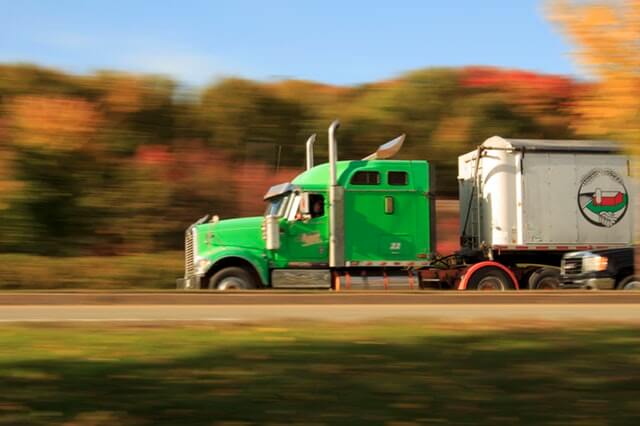Chain of Responsibility (CoR) places legal obligations on parties in the transport ‘supply chain’ and across transport industries in general. You are considered part of the road transport ‘supply chain’ if you have any control or responsibility over any transport task, such as consigning, packing, loading, or receiving goods transported by vehicles over 4.5 Tonne as part of your business. In simple terms, the supply chain refers to the businesses and people involved with moving a product or service from the supplier to the customer. Since 2008, the expectation has been that all parties involved in the road freight supply chain have responsibility for managing risk associated with their activities in the movement of products by road freight.
CoR laws apply in QLD, NSW, ACT, TAS, and SA under the Heavy Vehicle National Law. And in WA under the Road Traffic (Vehicles) Act. The NT does not have a specific CoR provision in transport law. However, employers carry obligations under the Work Health and Safety Law (visit NT Government – Penalties).
The changes to the Heavy Vehicle National Law (HVNL) came into effect on 1 October 2018. These changes intend to strengthen safety expectations and ensure accountability for breaches by responsible parties. Given their alignment with safety legislation, these proposed changes may be relevant to your workplace.
The proposed Chain of Responsibility changes will:
- Place a primary duty on each party involved in the supply chain. Primary duty represents a duty to eliminate or minimise potential harm or loss (risk) by doing all that is reasonably practicable to ensure safety. This will make any party (or parties) within the supply chain liable in the event they have requested or influenced unsafe work practices to take place, from either internal (fellow workers) or external (customers/contractors);
- Ensure a positive duty is placed on individuals to control risks. A positive duty requires an individual to proactively control risks (so far as is reasonably practicable) associated with areas in the chain of responsibility over which they have control;
- Ensure that responsibility is shared across the supply chain, not solely borne by the driver. The HVNL explicitly identifies the following roles and responsibilities: Operator/Manager/Schedulers, Consignor/Consignee, Loading Manager/Loader/Packers. Find an overview of each role and their responsibilities here.
- Place the burden of proof on the prosecutor to prove non-compliance (as is currently the case in most WHS/OHS legislation across Australia);
- Enshrine the concept of ‘Reasonably Practicable’ to assess liability rather than ‘Reasonable Steps’ (again, as is currently the case in most WHS/OHS legislation across Australia);
- Include a Vehicle Safety Standard (including dimensions) along with Speed, Fatigue and Mass Management Standards;
- Expand the National Heavy Vehicle Regulator’s investigative, enforcement and information gathering powers to bring them into line with the current WHS regulator’s powers.

So, what do these Chain of Responsibility changes mean in practical terms?
Primary Duty
The proposed Chain of Responsibility redefines ‘deemed liability’ to ‘primary duty’. In other words, it acknowledges that actions by other parties elsewhere in the supply chain can impact unsafe outcomes. To effectively manage this duty, consider the following questions:
- What activities do I directly control in the Supply Chain?
- What can I do to ensure that my actions in this step do not place our workers and other persons at risk?
For example, if you have control over loading times, is it reasonable to allow drivers adequate time to perform deliveries? Or, are they unreasonably forcing drivers to break curfews, speed limits or fatigue rules?
Positive Duty
Positive Duty recognises that Executive Officers of companies can make decisions that can impact workplace and road safety. Under the CoR it will now be possible to prosecute individuals at the Officer level in addition to prosecuting the business or corporation, even if a CoR related accident or incident has not taken place.
For example, an Executive Officer’s decision not to pay for truck servicing may result in a prosecution, even if a road accident has not occurred. In addition, Directors making decisions that can be proven to impact safety in the supply chain can result in Directors being personally liable.
Note that ‘reckless’ decisions, where a person deliberately and unjustifiably pursues a course of action while consciously disregarding any risks flowing from such action, can result in a maximum five-year jail penalty.
To effectively manage this Positive Duty respond to the following questions:
- What impacts will the decisions I make impact safety within the Supply Chain?
- How will requests I make to our contractors or customers impact their safety within the Supply Chain?
For example, If I decide trip times for drivers, whether direct employees or contractors, I must schedule reasonable driving conditions.
For example, if I reduce maintenance budgets, I must ensure that vehicle safety, such as maintaining brakes and tyres, is not compromised.
Reasonably Practicable
- The seriousness of the hazard (consequence).
- What was known about the hazard?
- What the person should have known about controlling the hazard.
- Consider the likelihood of harm resulting from the hazard alongside these factors.
- The cost of controlling the hazard.
Remember, ignorance isn’t a defence. Courts consider what should be reasonably known and industry practices.
Vehicle Safety Standard
This Chain of Responsibility Standard ensures vehicle safety, correct signage, and compliance with vehicle dimensions. Responsibilities include truck maintenance, load securing, and alignment with Fatigue, Speed, and Mass Management Standards. Key considerations include:
- Which truck and trailer should be purchased?
- How should the truck and trailer be maintained?
- How will unusually shaped loads be secured and carried?
In Summary
These Chain of Responsibility changes let organisations manage CoR like other workplace risks. A proactive approach should include:
- Identify work areas where your organization influences or controls safety across the supply chain.
- Conduct a gap analysis to identify where you need to develop or implement to comply with new CoR rules.
Note: The National Heavy Vehicle Regulator (NHVR) website lists a self-paced gap assessment tool: https://www.nhvr.gov.au/safety-accreditation-compliance/national-heavy-vehicle-accreditation-scheme. If you haven’t done this yet you need to make a start!
- Adopt a proactive approach to address all known risks, prioritising the highest rated risks promptly.
- Ensure CoR requirements are understood and supported across all levels, especially by executive leadership teams.
- Integrate CoR into your Safety Management System to avoid duplication and manage compliance effectively. For instance, integrate compliance management like speed, fatigue, and vehicle standards into maintenance programs and ensure regular reporting.
- Adopt an ‘Assurance’ approach to regularly test CoR processes for compliance with CoR laws.
- Plan testing and document completion evidence. Testing may include:
- Internal or External Audits/Reviews,
- Reporting includes incident data, completed tasks like maintenance and training, complaints, breaches, and inspection performance.
- Ongoing consultation with all parties involved in your supply chain (to ensure ongoing compliance).
Sounds familiar? The compliance principles outlined in health and safety legislation are quite similar. If you manage health and safety legislation requirements now, you can integrate CoR into your current systems.
That said, if you have any questions, please do not hesitate to reach out to us. If a five-minute conversation will get you on the right track, we would love to assist. If you need more assistance, this is something we can also support.
Source: https://www.nhvr.gov.au/safety-accreditation-compliance/chain-of-responsibility
(NVR: Chain of Responsibility)
To keep up to date with our latest news, click here.
Latest Posts
Share on Socials:
Subscribe for expert safety advice, news and updates.
Action OHS Consulting acknowledges Traditional Owners of Country throughout Australia and recognises the continuing connection to lands, waters and communities. We pay our respect to Aboriginal and Torres Strait Islander cultures; and to Elders past and present. Aboriginal and Torres Strait Islander peoples should be aware that this website may contain images or names of people who have since passed away.

